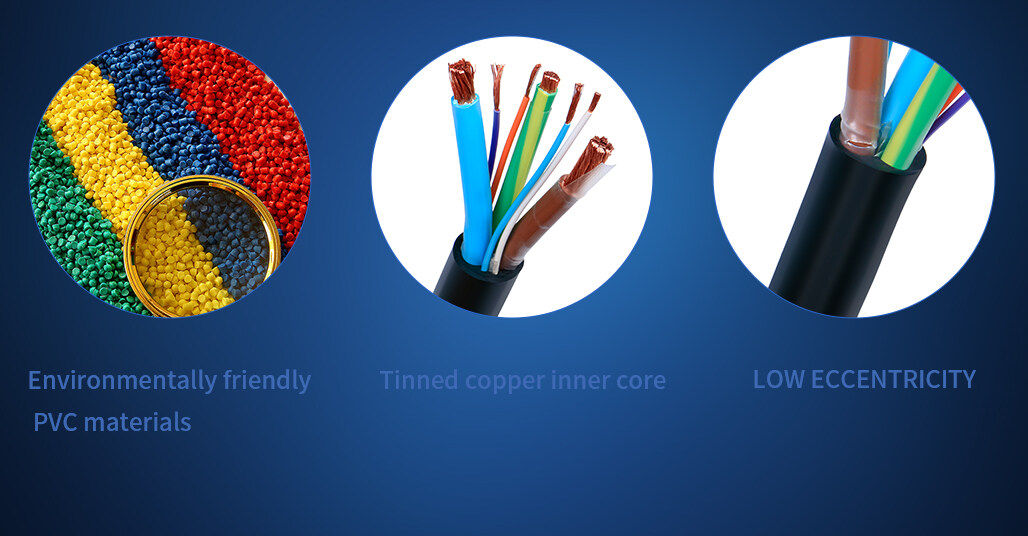Email format error
Email cannot be empty
Email already exists
6-20 characters(letters plus numbers only)
The password is inconsistent
Email format error
Email cannot be empty
Email does not exist
6-20 characters(letters plus numbers only)
The password is inconsistent

News at Linke
News from National Cable And Wire Manufacturing Company.

What are underwater cables used for?
Introduction:
In the intricate web of global connectivity, the silent workhorses known as underwater cables, or submarine cables, form the backbone of our interconnected world. These composite cables bulk together various components, including optical fibers, electrical conductors, and protective layers, to facilitate a seamless exchange of data across the ocean floor. In this blog post, we will dive deeper into the multifaceted applications of underwater cables, shedding light on their significance in diverse fields and their role in shaping the future.
1. Global Communication Networks:
The heartbeat of our digital age is sustained by the vast network of underwater cables that crisscross the ocean floor. These cables are instrumental in connecting continents and facilitating high-speed data transfer, forming the foundation of our global communication networks. The term "composite cable bulk" encapsulates the synergy of technology that makes this seamless communication possible, integrating optical fibers and other essential elements.
2. Scientific Research and Oceanography:
Beyond their role in communication, underwater cables serve as invaluable tools for scientific research and oceanographic exploration. Real-time data transmission through these cables allows scientists to monitor the ocean's dynamics, study marine life, and understand environmental changes. The integrated undersea research infrastructure, facilitated by composite cable bulk, has opened new frontiers in our exploration of the deep.
3. Renewable Energy Transmission:
As the world strives towards sustainable energy solutions, underwater cables play a pivotal role in transmitting power from offshore renewable energy sources to onshore facilities. Wind and tidal farms, situated in the vast expanses of the ocean, rely on submarine power cables to transport the energy they generate. This application of composite cable bulk contributes significantly to the global transition to cleaner energy alternatives.

4. Marine Resource Management:
The applications of underwater cables extend beyond communication and energy to the realm of marine resource management. Through the integration of advanced monitoring systems with underwater cables, scientists and resource managers can remotely collect data on fisheries, detect environmental changes, and contribute to the sustainable management of marine resources.
5. Seismic Monitoring and Disaster Prevention:
Beyond their contributions to communication, research, and sustainable energy, underwater cables play a crucial role in seismic monitoring and disaster prevention. The ocean floor, laden with these cables, serves as a vast network for detecting underwater earthquakes and other seismic activities. Real-time data collected through these cables aids in the early detection of potential tsunamis and allows for timely evacuation measures, showcasing yet another layer of their utility in safeguarding coastal communities.
6. Submarine Cable Maintenance and Repair:
Ensuring the longevity and reliability of the global network requires effective maintenance and repair mechanisms for underwater cables. Specialized vessels and remotely operated vehicles (ROVs) are deployed to address cable faults or damages. The continuous improvement in repair technologies ensures that the downtime of these critical communication links is minimized, highlighting the ongoing innovation and investment in the maintenance of the undersea cable infrastructure.
7. International Collaboration and Diplomacy:
The installation and maintenance of underwater cables often involve international collaboration and diplomacy. Countries come together to lay cables across borders, creating a network that transcends geopolitical boundaries. The shared interest in global connectivity fosters partnerships and agreements that contribute to the peaceful coexistence of undersea cable systems. This diplomatic aspect of submarine cable projects is integral to maintaining the flow of information and ensuring the stability of international communication networks.
Conclusion:
In conclusion, the exploration of underwater cables reveals a fascinating tapestry of interconnected applications, each contributing to the advancement and sustainability of our modern world. From enabling global communication networks and supporting scientific research to facilitating renewable energy transmission, marine resource management, seismic monitoring, and international collaboration, these cables are indeed versatile workhorses beneath the waves.
The composite cables bulk together diverse technologies, creating a resilient and interconnected undersea network that is fundamental to our progress. As we continue to unveil new possibilities and face emerging challenges, the significance of underwater cables in shaping the future of communication, research, and global cooperation becomes increasingly evident. Thus, our journey into the depths of technology and connectivity remains intertwined with the silent yet impactful presence of underwater cables beneath the ocean's surface.

